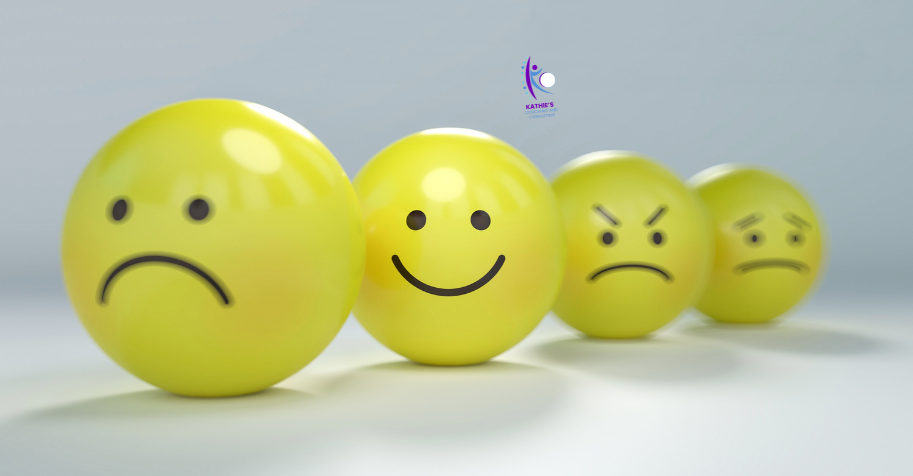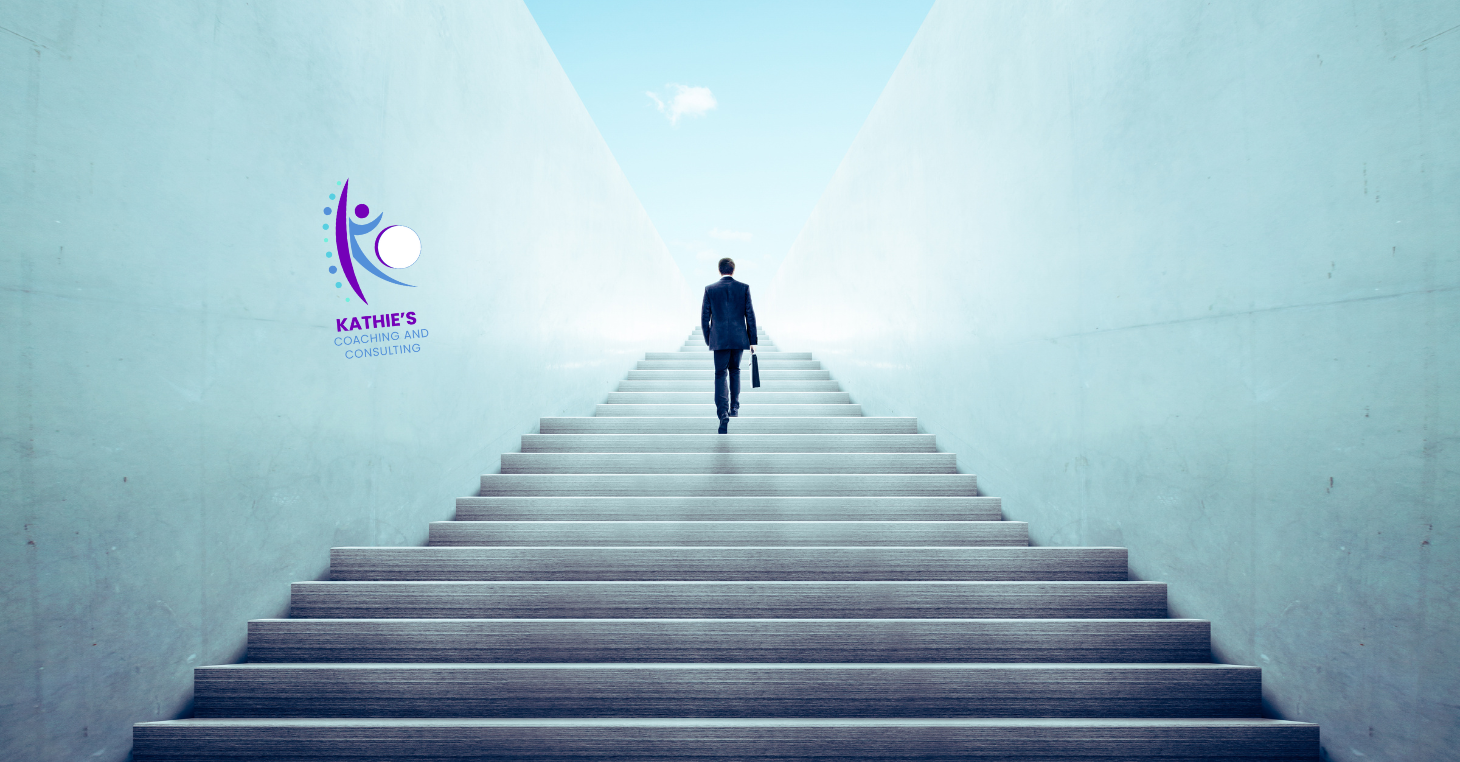From Superstar to Burnout: The Dark Side of High Performance Nobody Talks About
The dark side of burnout
Burnout. It’s a sneaky adversary that can creep into your life, unannounced, until one day, you wake up exhausted, unmotivated, and wondering, What happened? Whether you’re an individual juggling personal and professional responsibilities or a leader managing a team, recognizing the signs of burnout is crucial. Let's dive into how burnout manifests, its ripple effects, and actionable strategies to overcome it.
What is Burnout?
Burnout is more than just feeling tired or stressed. It’s a state of chronic physical, emotional, and mental exhaustion often caused by prolonged stress. Think of it as your personal "check engine" light—ignoring it can lead to major breakdowns, personally and professionally.
Watch this episode on Kathie’s YouTube Channel
Listen on Kathie’s Coaching Podcast
10 Personal Signs of Burnout
Sleep Troubles
Even after a full night's sleep, you wake up tired. Chronic fatigue can linger, leaving you feeling unrefreshed despite rest.
The "Sunday Scaries" Every Day
If every workday feels like a Monday, with dread creeping in the night before, burnout might be the culprit.
Foggy Brain
Experiencing memory lapses or feeling disoriented, like not knowing where you are while driving, is a red flag.
Passion Flatline
When things you once loved feel uninteresting or unimportant, it’s a sign you’re running on empty.
Emotional Overload
Overwhelming emotions—whether sadness, frustration, or anger—can indicate burnout.
Eating Habits Change
Burnout can disrupt your eating patterns, causing stress eating or making it difficult to eat at all.
Zombie Social Life
You withdraw from social interactions, feeling like you’re going through the motions without engaging.
Invisible Weight
A constant sense of overwhelm, as though you’re carrying a heavy mental load, is a common symptom.
Energy Drain
Your energy feels perpetually depleted, even for things that once energized you.
Fantasies of Escape
Dreaming of leaving everything behind can signal a desire to flee the pressures causing burnout.
Burnout in Teams: Signs to Watch For
Collaboration Crash
Team members avoid working together, leading to conflicts and inefficiencies.
Zombie Meetings
Meetings become lifeless, with minimal participation or engagement.
Energy Vacuum
A lack of initiative or enthusiasm among team members is a telltale sign.
Creativity Freeze
Innovation stalls as team members stop brainstorming or contributing ideas.
Conflict Explosion
Unresolved tensions escalate, creating a toxic work environment.
The Great Resignation
High turnover rates may reflect underlying burnout.
Morale Freefall
Smiles and laughter become rare, replaced by frustration and apathy.
The "Fine" Default
When asked how they’re doing, team members respond with a hollow "I’m fine," masking deeper issues.
Deadline Doom
Projects are rushed or missed, with no enthusiasm to address the fallout.
Recognition Rejection
A lack of meaningful praise or acknowledgment leads to disengagement and dissatisfaction.
Ripple Effects of Burnout
Ripple Effects of Burnout
Burnout doesn’t just affect individuals—it impacts everyone around them. From strained personal relationships to decreased team productivity, its effects can snowball.
Imagine a stressed-out leader unknowingly passing their anxiety onto their team, creating a culture of fear and disengagement.
That’s the ripple effect of burnout.
Individuals - break through burnout
Breaking Through Burnout
For Individuals
Set Intentions
Start your day with a clear purpose. What do you want to achieve today? How do you want to feel?
Prioritize Sleep
Develop a consistent sleep routine, and create a restful environment to recharge your body and mind.
Incorporate Movement
Exercise helps release stress and boosts energy levels, making it a natural antidote to burnout.
Practice Emotional Awareness
Acknowledge your feelings without judgment. Journaling or talking to a trusted friend can help.
Seek Professional Help
Burnout isn’t something you have to tackle alone. Therapists, coaches, or wellness consultants can provide tailored support.
Teams - Break through burnout
For Teams
Build a Culture of Recognition
Celebrate achievements in meaningful ways, ensuring team members feel valued. Rewards and Recognition Here!
Foster Emotional Intelligence
Train leaders and employees in conflict resolution and emotional awareness. Emotional Intelligence in the Workplace
Encourage Collaboration
Create opportunities for team members to connect and work together, minimizing isolation.
Prioritize Work-Life Balance
Promote flexible schedules and discourage after-hours communication.
Invest in Wellness Programs
Holistic corporate wellness programs that address physical and mental health can prevent and alleviate burnout. How a corporate wellness consultant helps!
Kathie’s Burnout Story: A Case Study
As a corporate wellness consultant and trainer, I experienced severe burnout despite loving my job.
Lack of recognition, a toxic work environment, and the pandemic’s challenges all contributed to my decline. It wasn’t until I acknowledged the signs—brain fog, emotional overload, and energy drain—that I started to recover.
I pivoted to focus on helping others recognize and overcome burnout. My mission is to eliminate toxic workplace cultures through holistic wellness programs that foster engagement, recognition, and emotional intelligence.
Burnout Tips Prevention
Bonus Content: Burnout Prevention Tips
The "Check Engine" Method
Just like a car’s warning light, your body and mind give you signals. Learn to recognize and act on them before burnout worsens.
Micro-Breaks
Incorporate 5-10 minute breaks throughout the day to recharge.
Gratitude Journaling
Reflect on positive moments daily to shift focus from stress to gratitude.
Mindfulness Practices
Techniques like meditation or deep breathing can help you stay present and reduce anxiety.
Connection Activities
Organize team-building exercises to strengthen bonds and improve morale.
Burnout is a call for change
Final Thoughts
Burnout isn’t a badge of honor—it’s a call for change.
By recognizing the signs and taking proactive steps, you can create a healthier, happier life for yourself and your team.
Let’s set the intention to break free from burnout, foster kindness, and live with purpose and grace.
About the Author:
Kathie Owen is a seasoned corporate wellness consultant, life coach, and former fitness and wellness director with over two decades of experience in creating healthier, happier workplaces. With a psychology degree from the University of Houston and a passion for motivation, Kathie has dedicated her career to ending toxic workplace cultures through holistic wellness programs that truly make a difference.
Kathie Owen, Corporate Wellness Consultant since 2012 (Our Story)
Having worked in both corporate and fitness environments, Kathie blends her expertise in employee engagement, leadership development, physical health, and mental well-being to design programs that prevent burnout and inspire thriving teams.
She’s been a certified fitness trainer since 2002 and has personally coached hundreds of individuals to reach their wellness goals. Now, she’s on a mission to share her strategies with companies that value their people.
Through her 12 Days of Burnout Breakthrough series, Kathie combines personal stories, expert insights, and practical tips to help you recognize, prevent, and heal from burnout. Her goal? To show you how a little bit of wellness can transform not only your workplace but also your life.
When she’s not leading workshops, coaching aspiring wellness professionals, or writing her next blog post, you’ll find Kathie walking her dog Rusty, diving into her favorite self-development books, or dreaming up her next big idea to inspire and uplift others.















From corporate burnout to Chief Encouragement Officer: I transformed anxiety into leadership using sports psychology, intuition, and Neville Goddard's visualization. Now I help executives perform under pressure and lead with encouragement through the Encouragement Collective.
#ChiefEncouragementOfficer #BurnoutRecovery #SportsPsychology #LeadershipDevelopment #ExecutiveWellness #MindsetCoach